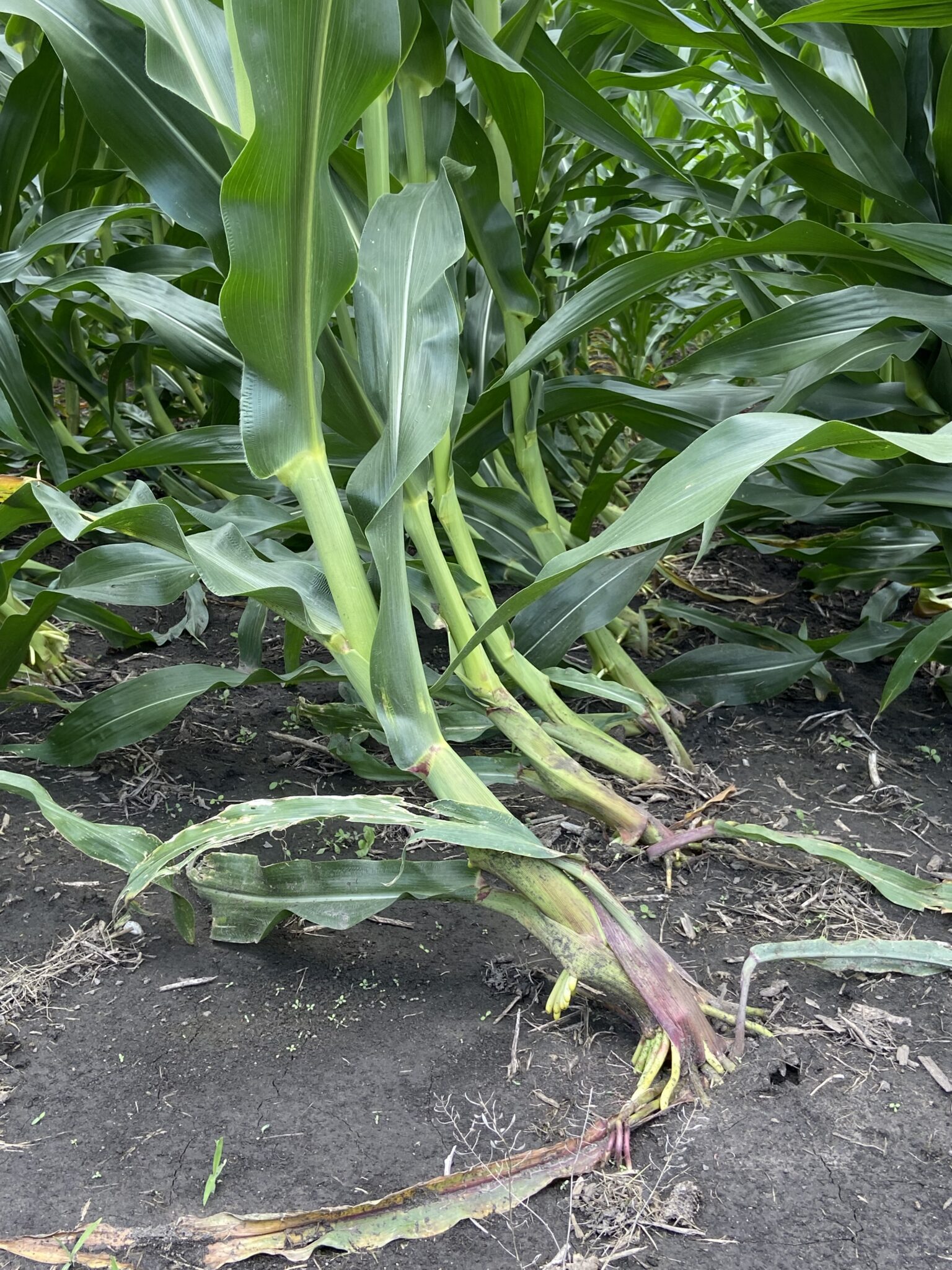
With tight planting windows, it can be a challenge to get seeds in the ground at the optimal time.

With tight planting windows, it can be a challenge to get seeds in the ground at the optimal time.
As the crop advances into the V7–V10 stages, many areas of the state have experienced favorable conditions, with adequate moisture and the accumulation of growing degree days (GDDs) supporting rapid vegetative growth.

The number of 30-, 40-, and 60-ft wide (or larger) field crop planters across the U.S. Midwest is greater today than 30 years ago.

Recent storms and heavy rainfall brought on by the remnants of Hurricane Beryl have crossed parts of Indiana this week and brought excessive winds which has resulted in corn being “flattened” from lodging in certain areas of the state.
With planting now wrapped up nationwide, corn emergence is nearing completion across much of the Corn Belt. Emergence in Indiana has progressed well, reaching 89%, up from 81% the previous week, although it is still slightly behind the five-year average of 94%.

Field corn in Indiana typically enters the critical flowering stages of pollen shed and silk emergence sometime between late June to late July.

The consequences of flooding, ponding, and saturated soils on young corn depend heavily on the duration of the stress and temperatures.

According to the USDA-NASS planting progress report released on June 9, 2025, 97% of the U.S. corn crop has been planted, a notable increase from 93% the previous week and at the same pace as the five-year average of 97% (Figure 1).

According to the USDA-NASS planting progress report released on June 2, 2025, 93% of the U.S. corn crop has been planted, a notable increase from 87% the previous week and matching the five-year average of 93% (Figure 1).

Planting wrapped up last week at the Pinney Purdue Agricultural Center (PPAC) in Wanatah, IN, and the week before at the Agronomic Center for Research and Education (ACRE) in West Lafayette, so our two main Purdue Corn Team research sites are in the ground and growing.
© 2025 Purdue University | An equal access/equal opportunity university | Copyright Complaints | Maintained by Pest&Crop newsletter
If you have trouble accessing this page because of a disability, please contact Pest&Crop newsletter at luck@purdue.edu.